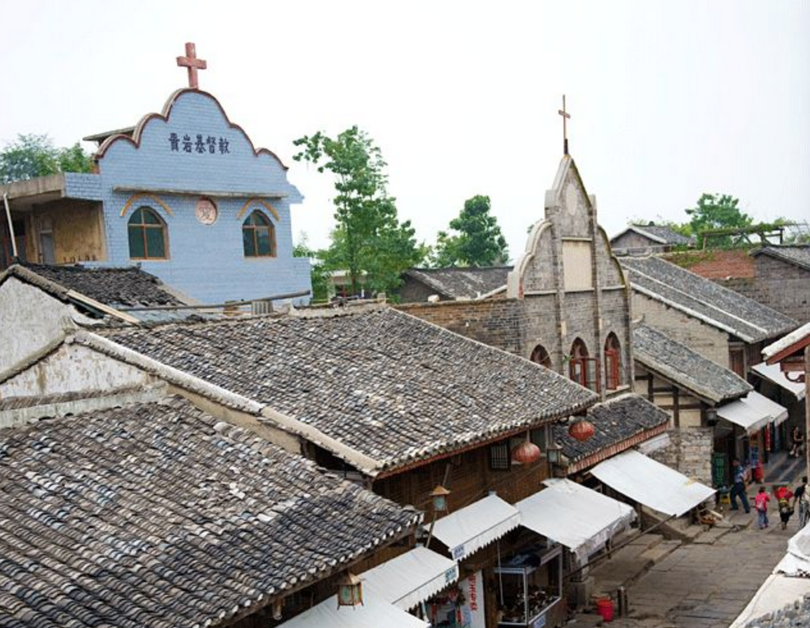Qingyan Ancient Town, one of the four famous historical and cultural towns in Guizhou Province, lies in the southern suburb of Guiyang, the provincial capital. As an ancient town, Qingyan Town was originally built in 1378 as a military fortress.
Christianity has been preached into Qingyan Ancient Town for about one century. However, it was the youngest religion in the town as compared to Buddhism, Taoism and Catholicism. Plus, there has been never a fixed gathering place for the local believers. As a result, the Christians rank the fewest among the religious people in the area.
The church in the town has more than 200 believers with some coming from the surrounding villages with a Sunday attendance of 40 to 50. Around 200 to 300 people attend the Christmas celebrations annually. The church also visits the members irregularly during the workdays.
The church's history can be dated back to 1921 when Pastor George Cecil Smith (1867-1941), a British missionary from China Inland Mission, firstly evangelized in Yangmeibao, a village in Qingyan.
In 1934, the pastor appointed three local sisters to preach in the town and they built a church. Four years later, Chen Fengling was designated as the preacher in the area and lived in a believers' home for the following eight years.
In 1946. the preacher rented a resident's house as the gathering place and one year later the congregation moved to a believer's home for gathering and evangelizing.
The believers had grown to about 20 until the end of 1949. The following year, Zhang Jiabin was assigned to preach in Qingyan and baptized some believers every year. Until 1956, the number of the congregation had grown to 60, including some from the ethnic minorities like Buyi and Miao.
Zhang continued to lead the believers to gather after the opening up reform in 1980. The gathering was moved to another place in 1981 and resumed the service until 1988.
In 1987, the local authority funded the believers to construct a church and it opened to the public on the Christmas of 1988, ending the era of gathering in a family's house.
The church was registered in 1994 and requested to found a democratic management team to make sure the church is properly preserved. Seven years later, the church roof collapsed and it went through a one-year repair to be completed, funded by the CCC&TSPM and members.













